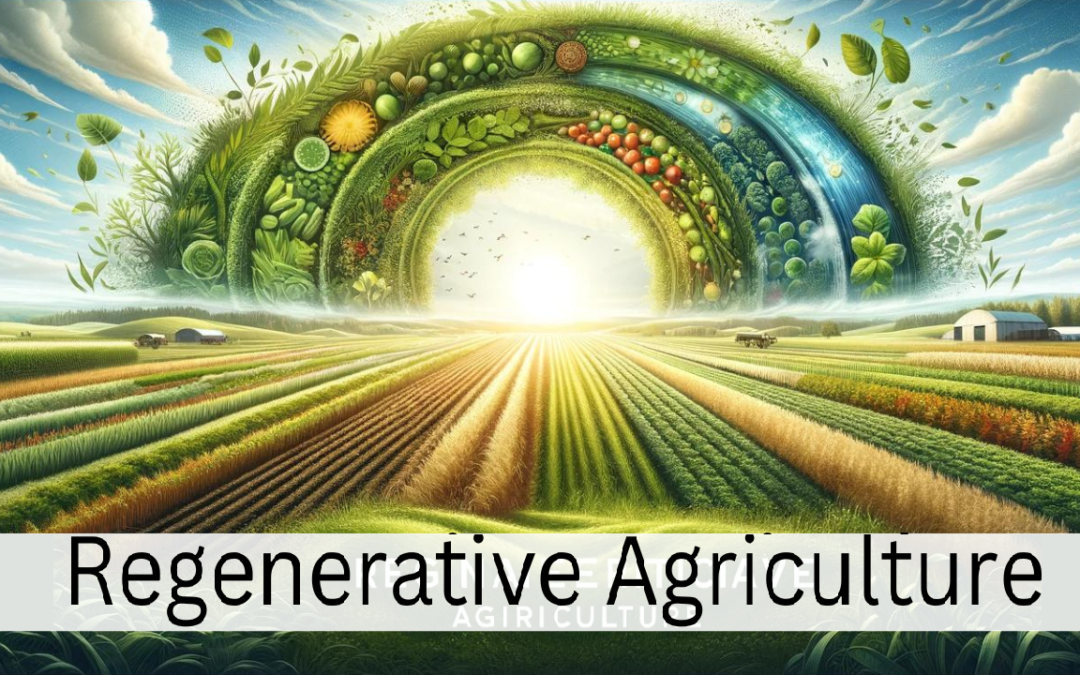In the realm of sustainable farming, regenerative agriculture is rapidly emerging as a beacon of hope and innovation. This approach goes beyond merely sustaining the current state of our environment; it aims to actively regenerate and revitalize the soil, ecosystems, and the planet at large. Through this essential guide, we’ll delve into the principles of regenerative agriculture, its benefits, and how it can be the key to a sustainable future for farming.
Understanding Regenerative Agriculture
The Core Principles
Regenerative agriculture is founded on a set of core principles designed to enhance soil health, water management, and biodiversity. It emphasizes the importance of soil regeneration, including practices such as cover cropping, reduced tillage, and composting. These techniques work together to increase soil organic matter, leading to improved soil structure and fertility.
The Difference It Makes
Unlike conventional farming methods, regenerative agriculture aims to create a positive impact on the environment. It focuses on restoring the vitality of the land, ensuring that each farming practice contributes to healthier soil, reduced erosion, and a decrease in the need for chemical inputs.
Benefits of Regenerative Agriculture
For the Environment
Regenerative agriculture plays a crucial role in combating climate change. By sequestering carbon in the soil, it reduces the amount of CO2 in the atmosphere. Furthermore, this approach supports water conservation and enhances biodiversity, creating more resilient ecosystems.
For Farmers and Communities
Not only does regenerative agriculture benefit the environment, but it also offers advantages for farmers and local communities. Healthier soil leads to increased crop yields and resilience to pests and diseases, which can improve farmers’ livelihoods. Moreover, it promotes food security and supports local economies by providing sustainable and nutritious food sources.

Implementing Regenerative Agriculture Practices
Starting with Soil Health
The first step towards regenerative agriculture is focusing on soil health. Practices such as cover cropping and reduced tillage help protect the soil surface, promote water retention, and encourage the growth of beneficial microorganisms.
Integrating Livestock
The integration of livestock into crop production systems, known as silvopasture, can further enhance soil health and biodiversity. Grazing animals contribute natural fertilizers through their manure, while their movement helps aerate the soil.
Embracing Biodiversity
Diversifying crops is another essential aspect of regenerative agriculture. By planting a variety of species, farmers can reduce pest outbreaks, improve soil health, and increase productivity.
The Future of Farming with Regenerative Agriculture
Regenerative agriculture represents a shift towards more sustainable and ethical farming practices. It offers a holistic solution to many of the environmental challenges we face today, including climate change, soil degradation, and biodiversity loss. As awareness and understanding of regenerative agriculture grow, it’s becoming increasingly clear that this approach could redefine the future of farming.
Conclusion
Regenerative agriculture is not just a farming method; it’s a movement towards a more sustainable and resilient agricultural system. By adopting and promoting regenerative practices, farmers, consumers, and communities can all contribute to a healthier planet. As we look to the future, regenerative agriculture holds the key to not only sustaining but regenerating our world’s precious resources. Let’s embrace this transformative approach and work together to ensure a sustainable future for farming.
Visit our EAT Community for more online learning opportunities and webinars!
Related Articles and Resources:
- Understanding regenerative Agriculture and Its impact on the Planet
- 5 Principles of Regenerative Agriculture
- How Companies Can Leverage Water Usage for a More Sustainable Future
- Embrace the Future of Farming: The Power of Regenerative Agroecology
- Sustainable Nutrition
- How to Turn Alpaca Poop into Black Gold for Your Garden


Recent Comments